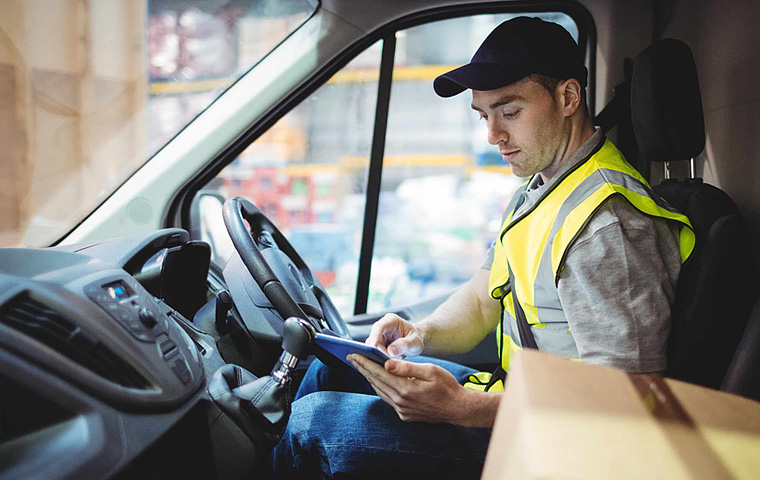The ELD Mandate of 2018 added a lot of new technology and new or updated terminology to commercial fleet management. One of the new terms is “personal conveyance”. This is one of the designations for HOS reporting on an ELD. If you and your drivers don’t understand the term and use it correctly, it could lead to hefty fines for noncompliance.

What Is Personal Conveyance on an ELD?
When a commercial fleet driver tracks the movements of a commercial motor vehicle using an ELD, there are several types of information that must be included. One of these is the duty status. The broadest categories of duty status are fairly simple and straightforward:
- Driving
- On-Duty Not Driving
- Off-Duty
- Sleeper Berth
In addition to the above status designations, there are a few special driving categories. These include yard moves, adverse operations, oilfield operations, and personal conveyance. The personal conveyance designation should be used whenever a driver has to move the commercial motor vehicle for authorized personal reasons.
When Is Personal Conveyance Used?
There are a number of reasons that a driver might use the personal conveyance duty status. The most important thing to remember is that this should only be used when a driver is off duty since it doesn’t count toward HOS limits.
One of the most common uses for personal conveyance is when the driver uses the company vehicle to commute between home and work or to and from lodging when on an overnight trip. Drivers who are on break and traveling to a restaurant or entertainment facility should also use personal conveyance. It can be used when a driver has to move a truck to a rest stop because he is out of time for the day and needs to get his required rest time. In this last instance, the driver must make use of the nearest possible rest location to avoid HOS violations.
Sometimes a driver must use this designation in unusual circumstances. This could be because a safety official has requested that the vehicle be moved while the driver is off duty. It could also be when the owner of the vehicle has authorized use to transport personal belongings.
When Should Personal Conveyance Not Be Used?
There are several instances that might seem like they could be considered a personal conveyance designation but actually aren’t. Be sure to warn your drivers about these uses as they could cause non-compliance issues if the designation is used incorrectly.
A driver may not move the vehicle under personal conveyance in order to “enhance the operational readiness of a motor carrier”. This means when it’s time to head to a rest stop, the driver must choose the nearest one available, rather than picking a stop that’s closer to the next stop on his or her route.
In a towing operation, a driver can’t use personal conveyance after delivering a towed unit to return to the yard and pick up another. Likewise, transporting an empty trailer is not considered personal conveyance.
Any time spent driving a passenger-carrying vehicle while passengers are on board. This includes driving to lodging when carrying passengers on a multi-day trip. Delivering the luggage of passengers with no passengers onboard is also not an approved use of the designation. Other drivers who are off duty can be transported in personal conveyance, for instance, when several drivers choose to go to dinner together in the same vehicle while off duty.
A driver can’t use personal conveyance to deliver a vehicle to a repair facility or retrieve one once repairs are completed. Any travel related to repairs or maintenance is considered to be done “in furtherance of the business” and should be considered “on-duty”.
In general, any use of the motor vehicle that is for the purpose of business should not be considered personal conveyance.

Other Things to Know About Personal Conveyance
There are other considerations that drivers should be aware of regarding personal conveyance status. Some of these may seem obvious, but others might be surprising to drivers who have not encountered these specific circumstances.
A driver can be stopped and inspected while in personal conveyance status, even though the driver is off duty. When this happens, the driver should change their status to “on-duty, not driving” while the inspection is completed.
Personal conveyance time is considered off-duty and does not count toward HOS limits. It can be combined with other duty status designations as part of a 10-hour or 34-hour break.
Looking for an ELD solution that helps promote a culture of safety while making compliance a breeze? Contact Azuga today to learn more about our solutions and how they can improve your fleet operations.








